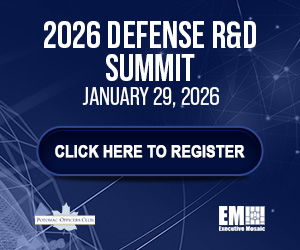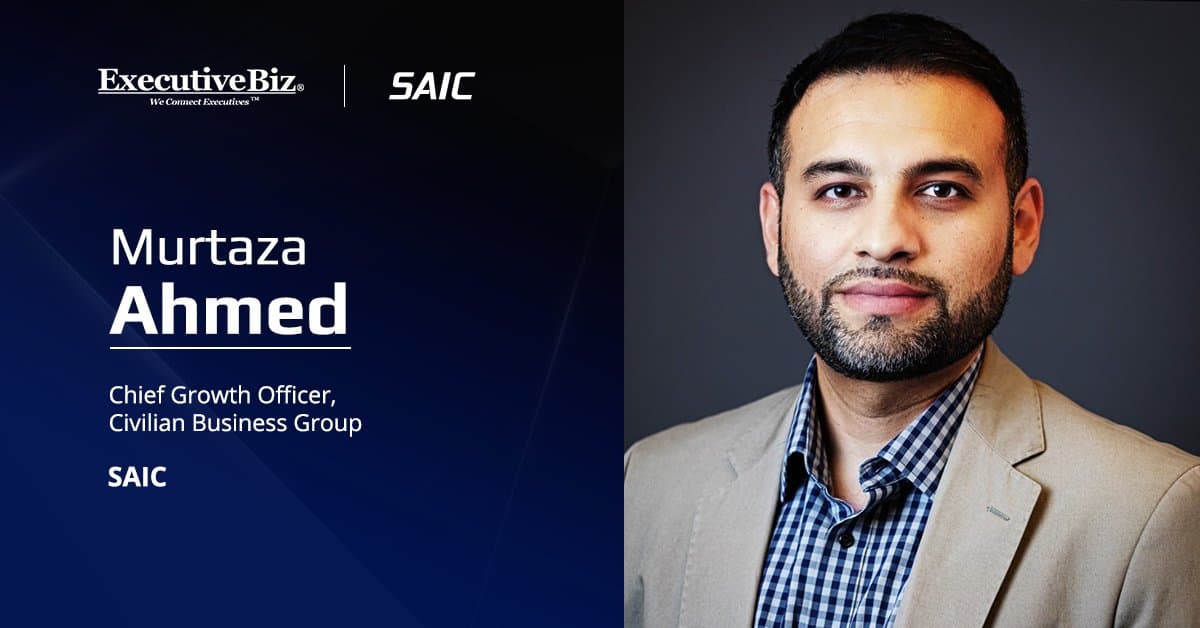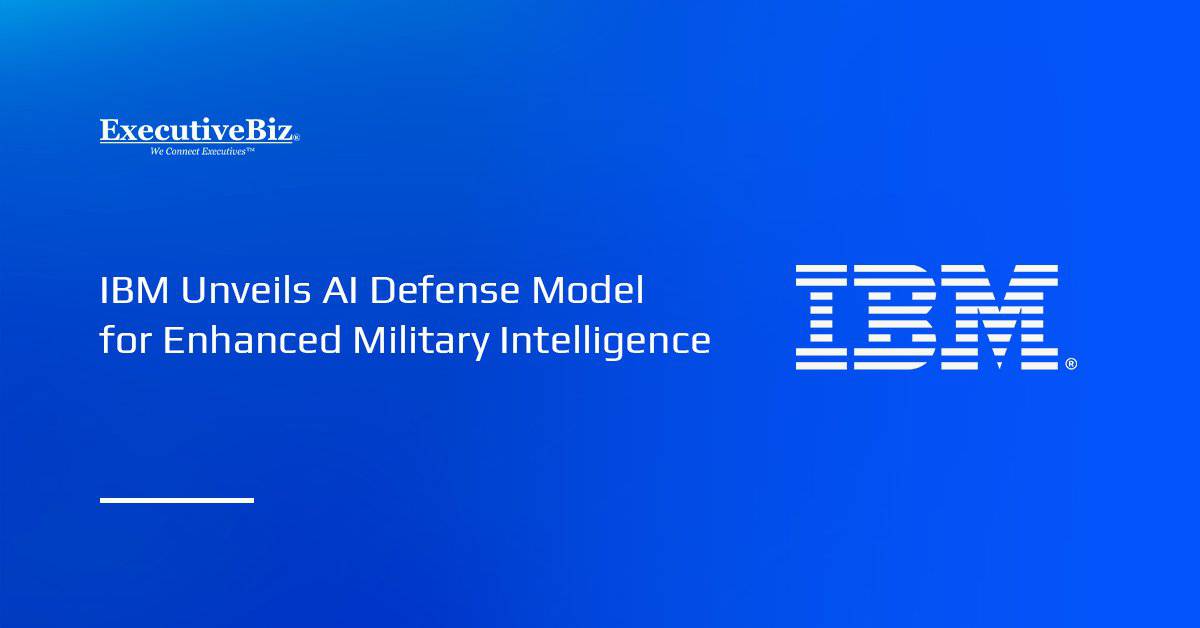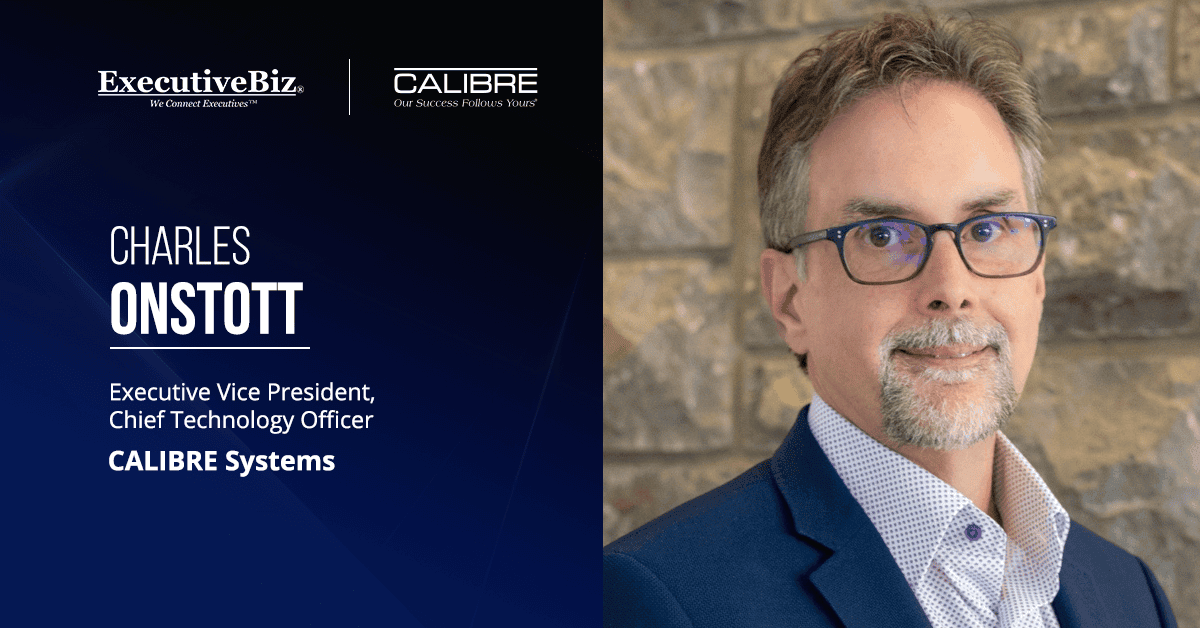A lot has changed in the GovCon business environment since we last spoke to SAIC Civilian Business Group Chief Growth Officer Murtaza Ahmed in June 2024. As the new administration has mounted a “revolutionary FAR overhaul,” among other modifications, Ahmed says SAIC has repositioned itself — pursuing opportunities and responding to client needs in new ways.
SAIC is meeting the moment with a newfound focus on efficiency, placing an even more concentrated focus on innovation and tech solutions that help federal agencies reduce redundancy.
In his latest Spotlight interview, the two-decade GovCon professional spoke with ExecutiveBiz about the importance of mission integration, where he sees SAIC in 10 years, and his advice for up-and-coming industry aspirants.

The best places to gain understanding on the ever-evolving priorities of the new administration and what their leadership needs from industry are Potomac Officers Club events. Be sure to attend POC’s first event of the new year, the 2026 Defense R&D Summit on Jan. 29, to hear about the latest developments in Golden Dome, defense AI, 5G and beyond. SAIC will be a platinum sponsor, alongside Lockheed Martin and other notable industry players. Register today!
ExecutiveBiz: Where do you see SAIC in 10 years and what are the concrete steps you have to take to get to that stage of evolution?
Murtaza Ahmed: In 10 years, I see SAIC as the premier mission integrator for the federal government. Whether it’s modernizing healthcare delivery, securing our borders or enabling safer transportation systems, our focus will continue to be on supporting the missions that matter most to our clients.
Civilian agencies are facing growing pressures to modernize faster, safeguard data and infrastructure, and deliver services with the speed and efficiency of the private sector. That expectation has intensified over the past year as comparisons to commercial innovation have become more frequent. Our role is to be the trusted partner government agencies can rely on throughout this transformation — helping them operate at the speed of relevance while maintaining the rigor and security their missions demand.
From a civilian business perspective, our evolution is clear: we want to be known not just as a top contractor but as a true mission support provider. That means being the partner agencies depend on to help them achieve their missions — not simply execute contracts.
To get there, we’re taking several key steps. First, we’re investing heavily in differentiated solutions and intellectual property that directly support mission priorities like border security, healthcare and aviation safety. We’re also focused on developing and expanding our talent base because at the end of the day, people are what drive mission success.
From a business development standpoint, we’re maintaining rigorous pipeline discipline — pursuing opportunities where we can deliver real value rather than chasing revenue for its own sake. And of course, flawless execution remains foundational. A strategy is only as strong as its results, and SAIC prides itself on delivering exactly what we promise with a high bar for program performance and accountability.
Ultimately, I describe this as “growth with purpose” — growth that not only advances SAIC but also strengthens the missions that protect and serve the nation. That’s the mindset guiding our team today and for the decade ahead.
EBiz: How do you set your priorities around limited capture dollars? What goes into the decision-making process of what contracts you want to go after?
Ahmed: That’s a very important topic for us internally, and we always make those decisions through a mission-focused lens. The first question we ask isn’t about contract size or potential revenue. It’s ‘can we add unique value to this mission?’ ‘Do we bring discriminators that can help the client achieve their goals faster and more efficiently?’
We typically prioritize opportunities in three key areas. The first is mission impact — does this opportunity support a national imperative like healthcare modernization, border security or transportation safety? The second is value add — are we bringing differentiated capabilities such as digital engineering, cyber resilience or AI-powered analytics that will make a measurable difference for the client?
And finally, there’s execution. Can we deliver with precision, reliability and scale once we win? Our focus isn’t just on capture but on performance. When a client sees a bid from SAIC, they should know it’s something we’re deeply invested in — that we have differentiators and that our execution will be flawless.
This framework keeps us focused on pursuits where we’re not just another bidder, but a true partner driving mission outcomes. If an opportunity doesn’t meet that bar — if we don’t feel we can bring unique value or meaningful impact — it’s usually a no-bid for us.
EBiz: Why is mission integration a central tenet of what SAIC does?
Ahmed: That’s a great question. The hardest problems our government faces — whether in defense, civilian agencies, border security or national infrastructure resilience — can’t be solved by a single technology or system. They require integration: stitching together legacy systems, emerging innovations and diverse partner capabilities into something that operates seamlessly, securely and at scale.
Mission integration is the thread that strengthens and safeguards America’s mission-critical infrastructure. It’s how we help agencies achieve transformative results without increasing risk, and that’s why it’s such a core tenet for us.
Our differentiation really comes from three pillars — experience, expertise and ecosystem. We’ve supported government missions for decades, across everything from border operations and civilian modernization to naval training programs and advanced defense technologies. That history gives us deep technical knowledge in areas like cloud, digital engineering, AI and cyber, and the ability to deliver with confidence.
Equally important is our ecosystem of partners. We bring together hyperscalers, startups and niche innovators in a collaborative network to deliver the best the industry has to offer. When clients work with SAIC, they’re not just getting one company; they’re gaining access to an entire ecosystem.
We also pride ourselves on being an unbiased partner. We recommend what’s best for the client, not what’s best for SAIC. That objectivity builds trust. Ultimately, mission integration is at the center of our DNA — it’s how we move agencies from ideas to execution while ensuring security, agility and mission success.
EBiz: As CGO for the civilian business group, your main focus is business development, not necessarily overseeing the integration work itself, correct?
Ahmed: That’s right. I don’t directly oversee execution, but it’s still an essential part of my role. When we’re developing business opportunities, my team is on the front line with our clients, discussing technology integration and mission needs. We work very closely with our Chief Technology Office — it’s really one unified team.
Even though execution doesn’t sit within my organization, we make sure that everything we propose is executable. Before we submit a proposal, we go through a detailed assessment to confirm that what we’re committing to can actually be delivered. That ensures alignment between capture, technology and delivery from day one.
It’s that collaboration, between growth, technology and operations, that allows SAIC to bring integrated, executable solutions to every client mission we support.
EBiz: What advice would you give to those who are pursuing executive-level positions in GovCon and looking to accelerate their professional growth?
Ahmed: A few things come to mind. First, this is a rapidly changing environment, especially for growth-focused professionals. Many of the relationships we’ve built over the years have evolved as people move into new roles and organizations. So, my first piece of advice is to keep investing in relationships.
This industry is built on trust. You have to build trust with your clients, your partners and your own teams, and that takes time. But it pays dividends when you’re asked to take on mission-critical work. I always tell my team that you should be the first person your client calls when they have a problem. Whether or not you can solve it is secondary. What matters is that they trust you to give them a straight, unbiased answer.
The next piece of advice is to anchor yourself in the mission. If you want to lead at an executive level in GovCon, it’s not enough to chase revenue. You need to understand how your work impacts the mission, whether that’s a veteran receiving healthcare, a family traveling safely or a border agent relying on secure systems. Understand what the mission means to your client, what their needs and challenges are, and what success looks like for them.
Third, develop range. You have to be able to operate effectively in strategy sessions with agency leaders and alongside delivery teams. You must be credible in every room. That comes from understanding the environment — being situationally aware and staying close to your clients so you know what’s really happening on the ground.
Finally, have a growth mindset. Every pursuit, win or lose, and every leadership challenge is an opportunity to grow. I tell emerging leaders to be a student of the mission, a steward of growth and a builder of trust. If you focus on those three things consistently, you’ll be ready for the next role and the next responsibility when it comes.






